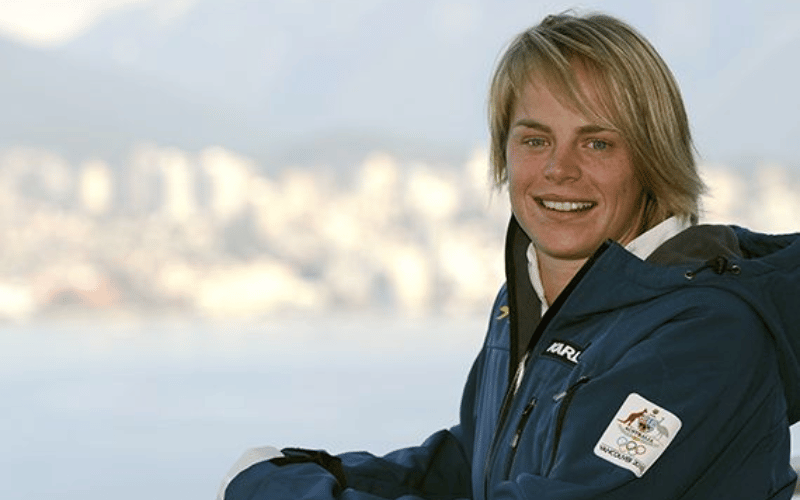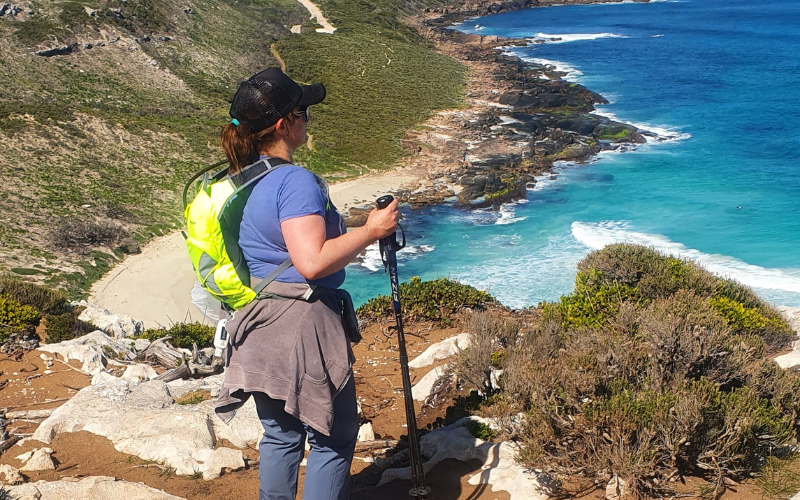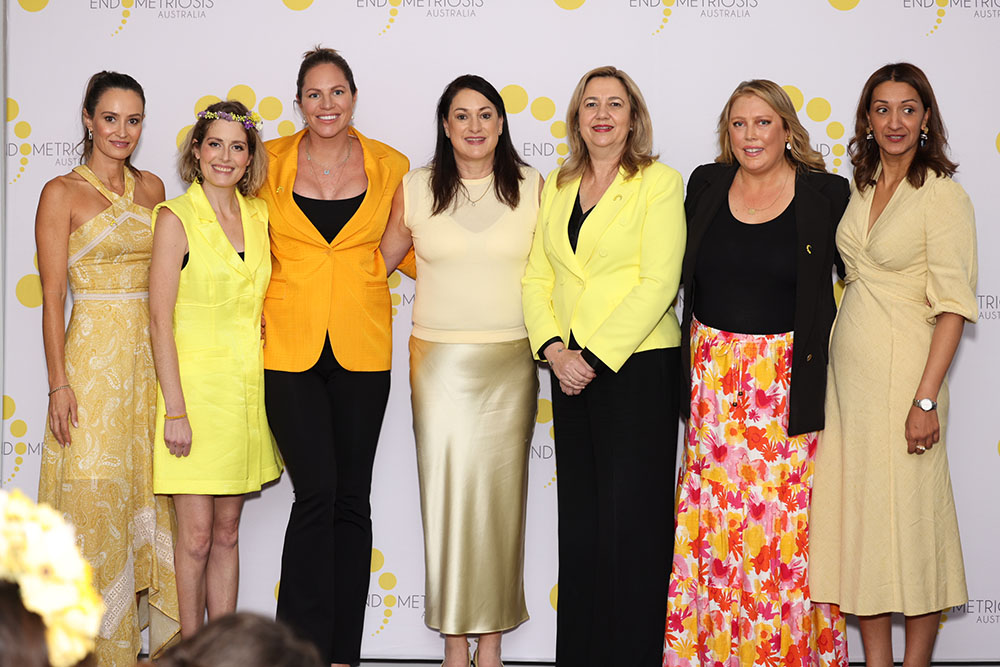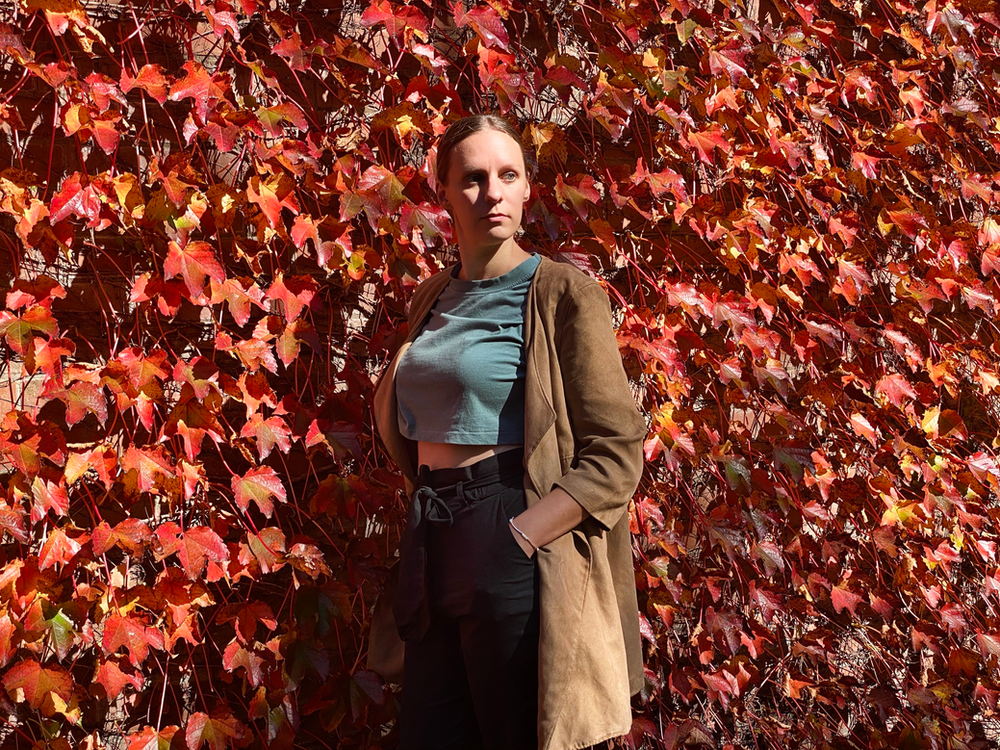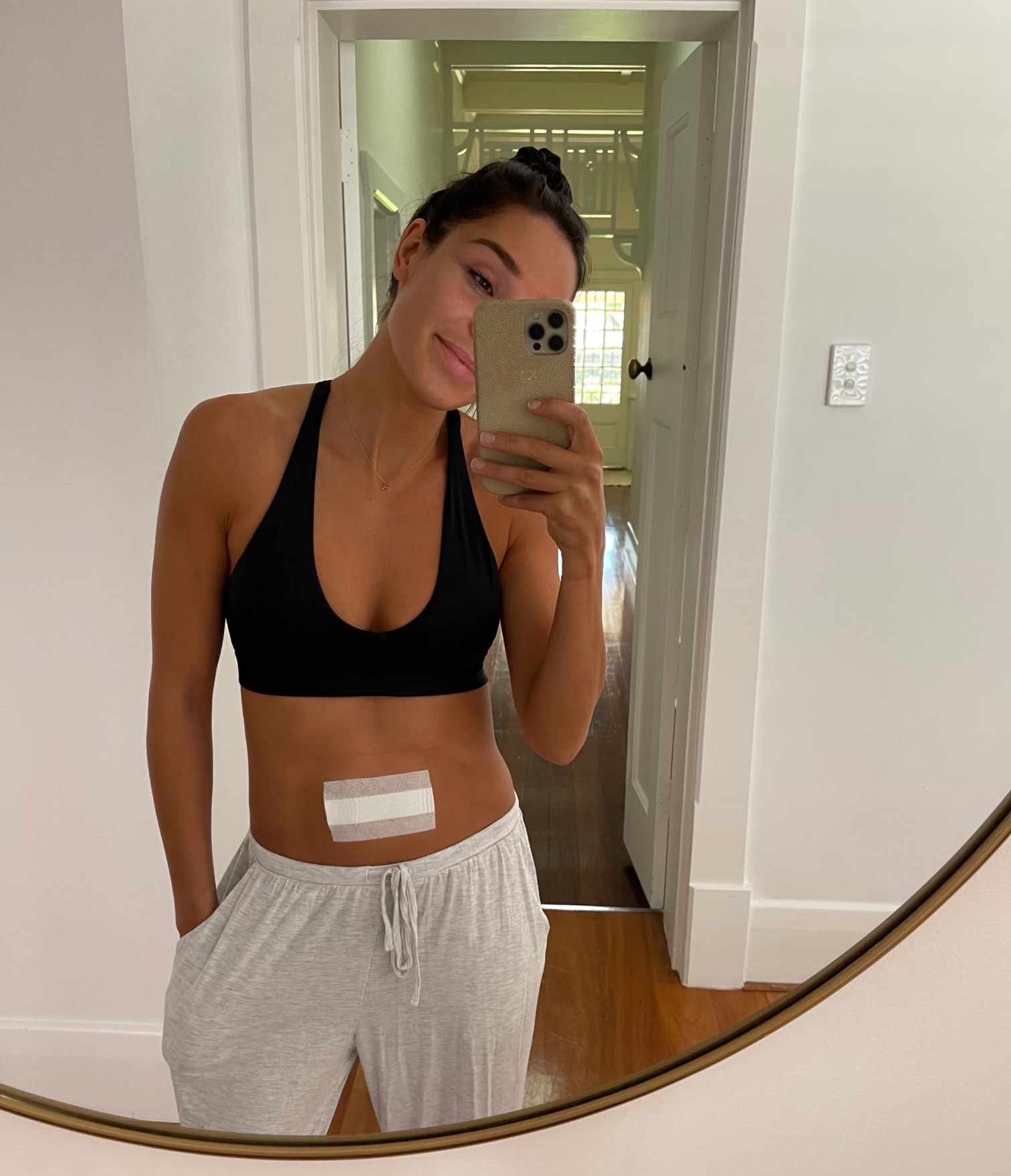By Naomi
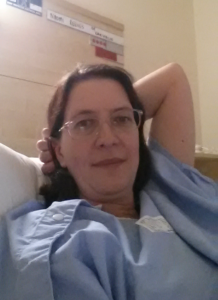
My name is Naomi, I am 47 years old and live in Lake Macquarie, New South Wales, Australia. I am a conveyancing secretary married to Peter and mother to 16 year old Luke.
My journey to diagnosis.
I started my periods when I was 12, in 1979. My periods were pretty regular from there onwards, not too heavy and lasting around six days. Pretty normal really. This all changed twelve months later, in fact on my best friend’s birthday, 27 November 1980. I was at school and remember the date as I was too unwell to attend her party afterwards. The pain hit me full force and was excruciating.
That was it for me from then onwards, every month, excruciating pain.
Other than the pain, which hit around two hours prior to my period arriving and lasted two days, I had no issues with my periods, no heavy bleeding or clots, I was regular as clockwork at 31 days and my periods always lasted six days.
My mother felt so helpless as she had never suffered pain during her periods, and eventually arranged for me to see a gynaecologist. He said it was normal for some girls to have bad pain, and that it would all go away when I had a baby. Gave us a script for the pill, checked out my ankles and said that I shouldn’t have any issues with weight gain from the pill, as I had lovely skinny ankles – yes he seriously said that.
After a couple of switches around to find the right pill, I stayed on the pill until I was in my early 20’s and the pain was much reduced and bearable.
My journey to motherhood.
Around 1990 my husband and I wanted to try to fall pregnant. Obviously this required me to stop taking the pill. I was actually quite excited!
That first period off the pill – oh wow it was so bad. I realised how my pain every month had been well masked by the medication, but it was worth it to try to have a baby. I fell pregnant within three months but miscarried at around six weeks.
Famous last words from my GP – well at least you know you can fall pregnant.
Around eighteen months later we moved to Cessnock, in the Hunter Valley area of New South Wales (we had previously been living in Sydney). I asked my GP to send me to a gynaecologist who said my symptoms were “strongly suggestive of endometriosis”. Now I had heard of this before, and my hopes for motherhood were shattered as all I knew was that if you had this disease you couldn’t have children. He set me straight and said it could make it harder but it was perfectly possible to have children, and that he wanted my husband and I to have further testing. Nothing showed a reason for my infertility.
My husband’s family had a close friend who was a gynaecologist so in 1993 we went to see him. He said the only way to know what was happening was surgery, so this was done at King George Hospital in Sydney. After waking up he told us that I definitely had endometriosis and that he had used the laser and burnt it off. He then said there was this new wonder drug, called Danazol, which was designed to kill off any remaining endo and to give me the best chance for falling pregnant. He said it was very strong and that I would have some side effects, but that it was worth it. After four months I had to stop taking it. I put on a huge amount of weight very quickly and was so horribly nasty to everyone, moody, grumpy and very unpleasant. Thankfully that’s all that happened, the potential side effects include excessive hair growth, deepening of the voice, growth of the adams apple, and enlargement of the clitoris, none of which would be reversible. Only a man could develop this drug and give it to women and say “it will be worth it”. It was the worst four months of my life, so far anyway.
I then went for one last test, a hysterosalpingogram, which involved injecting a dye through my cervix whilst x-raying my pelvis, to check if the coloured dye went through my fallopian tubes. My doctor also said that the chances of falling pregnant following this test were high, as it could clear out any possible detritus in the tubes . And yet again, another lovely test that nobody bothered to tell me was very painful. Thankfully my mother (who had her own fertility issues in the past, non- endo related) told me it hurt so I took some panadol. I should have taken something stronger.
On our next visit to the specialist he told us that my tubes were clear and there was no reason why I couldn’t fall pregnant. Obviously my next step would be IVF, and he gave us a letter of referral and told us to take it a couple of levels down where the IVF office was. We left his office, looked at each other, and went home. It was all too much to take in and we wanted time to think on it. My husband wasn’t keen on IVF and I wasn’t given a lot of say in that decision.
During this time my pain was continuing to increase and each month I was having time off work and taking very strong pain killers just to cope.
Over the years I tried many things to help the pain; went back on the pill, tried Provera and Duphaston, both progesterone tablets, none of which really helped do much. I never lost the weight that I gained whilst on Danazol. The pain thankfully was still only a couple of days each month, but those days just floored me. I didn’t stay on anything for long, as I really wanted to have a child.
It ate away at me. It suffused every single part of my life, I hated anyone who fell pregnant, and each time I got my period a little bit more of me died. My marriage was also falling apart, for many other reasons but the infertility certainly didn’t help.
In May 1997, one of our dogs died a rather nasty death from eating something poisonous and she died in my arms. I was shattered and when I realised about seven weeks later that I hadn’t got my period I wasn’t surprised. About a week after this I had an episode of sudden onset pain one evening with some bleeding, and the next morning made an appointment with my GP. He listened to my story, and said “well let’s do a pregnancy test anyway and get this out of the way”. And it was positive.
My pregnancy was perfect. It was like the gods wanted to make up for all of the crap they had put me through. I instantly started to lose weight, it was quite funny when every month I went to my GP and was lighter, yet I was healthy, eating like a horse and my baby bump was increasing. Of course my marriage was still getting more miserable but by then that was out of my control.
When I was around 35 weeks pregnant, at my antenatal visit I was told that my baby wasn’t growing enough and they sent me for an ultrasound. It turned out that my cervix was dilated and I was going into labour, also that the baby was a footling breech. They immediately put me into hospital and there I was to stay until the birth of my son by c-section three weeks later.
My marriage broke down irretrievably around my son’s first birthday and a few months later I reduced my breastfeeding as his father was having him for overnight visits. My periods then returned and yes, the pain returned.
My journey to being “fixed”.
Over the years following the birth of my son, my periods were getting more and more painful, and the pain was more frequent. By the time he was three I was having pain every day, some days more than others. I decided to visit the gynaecologist that delivered my son, and he felt surgery was in order to see what was happening, given my history.
The result of that surgery was that I had uterine fibroids (the reason for my son being a footling breech as he was sharing womb room with them) and moderate endo but nothing was done at the time. He said that I needed to be on hormones to reduce the size of the fibroids before I could have them removed. So in October 2002 I started a six month course of Zoladex injections. This reduced the oestrogen in my body so that the fibroids would shrink. It also gave me some minor menopausal symptoms, nothing too bad but it certainly didn’t help my pain levels at all.
In May I had an endoscopic myomectomy of one fibroid. No idea why he chose to only remove the one, as I had others. He did not note that there was no evidence of endometriosis but noted that the other fibroids would require further review – surely he could have just taken them all out at the same time? The Surgical report said removal of one leiomyoma and one adenomyoma and the histology showed fibroids and adenomyosis (endometriosis within the wall of the uterus).
In July 2002 I was seven weeks postop. I was still having a lot of extreme pain but at my postop appointment he brushed me off, saying it was healing pain. Dr’s letter says we discussed adenomyosis, I recall asking if a hysterectomy would fix that and him saying that there was no way he would do such a procedure on me at my age (35) as I only had one child and may want more (even though I said I didn’t).
I was very disappointed that he did not appear to be listening to me, and asked my GP to refer me to another specialist as I researched adenomyosis (endometriosis within the wall of the uterus) and realised that to cure this I needed to have a hysterectomy, and I was very firm in my decision that I wanted this done.
I had been researching the conditions I had and through Yahoo Groups I found a wonderful group of ladies who regretfully suffered like I did. They helped me find answers and a specialist who could help. No normal gynaecologist can deal with such a complex disease, most of them specialise in obstetrics not gynaecology.
Between July and October 2002 I had such excessive bleeding I was wearing black every day and going through packets and packets of pads and tampons (at the same time). It was exhausting. I drove an hour to work and back again, and was also trying to parent, and doing all of this on large amounts of painkillers. I cannot describe the sinking feeling you get when you realise you are at home but don’t remember driving there – and I had a young child. And even worse when you wake up in the hallway because you took more painkillers because the first lot just didn’t work. It was very traumatic but I continued to keep on working, parenting, and doing the best I could. The turning point was when I ran out of sanitary items at 11pm at night, and had to wake my four year old son up and take him to Coles, where I walked in leaving a trail of blood behind me. The wonderful girl on the checkout immediately called the security guard, who ran down the aisle and grabbed me heaps of stuff, and took my son off me, carried him to the car, and gave me his phone number and told me to ring him when I got home so he knew I was ok. I cried and cried and hours after that.
In October 2002 I saw Professor Michael Cooper who agreed a hysterectomy was probably required but recommended I try the Mirena IUD first. In December 2002 I had a hysteroscope and biopsy of uterus, and the Mirena placed. Histology confirmed endo and adenomyosis. The Mirena was wonderful, I immediately stopped bleeding and my pain was much reduced. However in January 2004 it was beginning to fail and I made the decision made for a laparoscopic assisted vaginal hysterectomy.
In early May 2004 I waited all day at the hospital, after not eating for 48 hours and doing a bowel prep, and the operation was cancelled as they ran out of time. Oh the joys of the public health system. I was shattered after all my preparations, planning for time off work, and mentally preparing myself. I don’t think I was too popular with my bosses either.
On 9 August 2004 the LAVH was performed, together with excision of endo from both uterosacral ligaments. Both ovaries and tubes sighted as normal. I was released two days later and back at my parents house for less than two hours when I was returned to hospital by ambulance in extreme pain. I was advised I had a possible bowel perforation, so they did a CT scan but saw nothing. They advised me they cannot locate Professor Cooper and need to operate. They performed a laparotomy, cutting me from belly button to pubic bone. They inspected my bowel for nearly three hours but nothing was found.
Two days later when I finally allowed out of bed to shower my entire back from chest height to knees was black and blue with bruising. A further CT was done which showed a deep circumflex injury to the iliac artery from my original surgery, and internal bleeding the culprit. Professor Cooper came to see me and if they had reached him, he wouldn’t have operated but monitored the situation for 24 hours first.
It took me over 12 months to feel back to normal and it was so wonderful to have no pain at all, and not having periods 24/7 was just bliss!
In December 2005 I started noting issues with swelling and bleeding in my navel, and increased pain on the right hand side.
In June 2006 I saw Professor Cooper who suspected umbilical endometriosis. He sent me to Professor Michael Solomon who operated on 11 October 2006. He removed the umbilicus and the operative findings were “large ulcerating umbilical endometrioma”. He advised me that the endo deposit was around 40mm deep and 25mm wide.
I subsequently developed an incisional hernia where my belly button would have been.
In September 2008 I gradually developed lower back pain which increased quite quickly until I was struggling to function on a daily basis. My GP ordered an ultrasound which showed a 6cm x 6cm endometrioma. Previously I had never had any ovary involvement.
So back to Professor Cooper. On 2 February 2009 he removed my right ovary. In recovery he advised me that the cyst had recently burst or spilled. He was impressed that I had still be going to work and remaining upright, as a burst cyst is considered one of the more painful things that can happen. The ovary was partially adherent to the side wall and the histology confirmed endo. My back pain was gone, immediately upon waking from anaesthetic.
In August 2010 the pain was beginning to increase, again, on a monthly basis. I had another ultrasound which showed nothing. I saw Professor Cooper who felt that it was likely to be adhesions from both my laparotomy and the umbilical surgery. I tried taking the pill again but had to stop after four months as my blood pressure went through the roof.
The pain continued on and off, getting more frequent, not too bad but sometimes was very uncomfortable.
My partner had a serious accident in December 2010 resulting in a major spinal cord injury, and was in hospital and rehab for five months, during this time my pain was getting worse and worse but as before, I just took lots of painkillers and continued to get on with things. When he returned home I moved in with him and quit my job to care for him, until he was more improved.
Thankfully my liver function is still good which is impressive after the amount of painkillers I have taken over the years.
On New Years Eve 2012 I had an episode of extreme lower back pain which dropped me to the floor, and slowed eased. The pain lasted around two weeks, and my GP assumed a burst ovarian cyst.
The same thing happened about four months later.
On 1 May 2013 I saw Professor Cooper again, he felt there “may” be some endo and was reluctant to operate due to the positioning, and felt it may be too dangerous considering my other surgeries and possible adhesions. He suggested trying Provera. I gave up on the Provera after five weeks as my breasts became rock hard, sore and huge and there was no improvement in my pain levels.
In 10 May 2013 another burst cyst. That was it for me – I give up. I rang Professor Coopers’ rooms and booked surgery. On 30 September 2013 I had my left ovary removed and endo excised on my right side. The histology showed endosalpingosis and a small endometriotic cyst within the ovary.
Since then I have been endo pain free. I do continue to have twinges of pain that I put down to adhesions. Surgical menopause hasn’t been easy but it has been easier than I had imagined it would be. So far I am hormone free, but taking black cohosh for the hot flushes and using oestrogen pessaries for vaginal dryness, both of which help immensely. My bone density is poor, most likely a result of a combination of family history and the six month course of Zoladex.
I have recently had further surgery to repair the hernia caused by my many surgeries, in particular the umbilical one. In eight years my hernia had become, while not large, rather obvious especially when wearing fitted clothes. It even had a name, and I used to talk to it! The surgery was not easy and my surgeon has told me that I am at major risk of further hernias in the future. Good excuse not to have to go to the gym and lift weights!
Endometriosis has been a part of my life for 34 years and has had an impact on all of it. My personal life, my work life and my ability to parent. I am very grateful that I was able to have a child, and that my son has been so patient with my inability to do a lot of things with him. He is, according to his girlfriend, very sympathetic and understanding when she has period pain and I am very proud of that.
The education and support groups on Facebook have been a saviour for me, and I am honoured to be a part of all of them, and joint administrator of a few. We try our hardest to educate and support everyone, whether they have endometriosis themselves or are the partner, husband or parent of a sufferer.
While I am no longer in pain, endometriosis will always be a part of my life and I will never stop trying to raise awareness about this obscene disease that affects so many wonderful people.
In March this year I become frustrated at the lack of public awareness and publicity about endometriosis, even though a week in March is supposed to be Endometriosis Awareness Week (it’s a month in the USA) and in anger I wrote to the major newspapers in my state, together with my local city newspaper. I had one reply, from a lovely reporter at the Newcastle Herald who worked with me to have my story published.
One step at a time.



